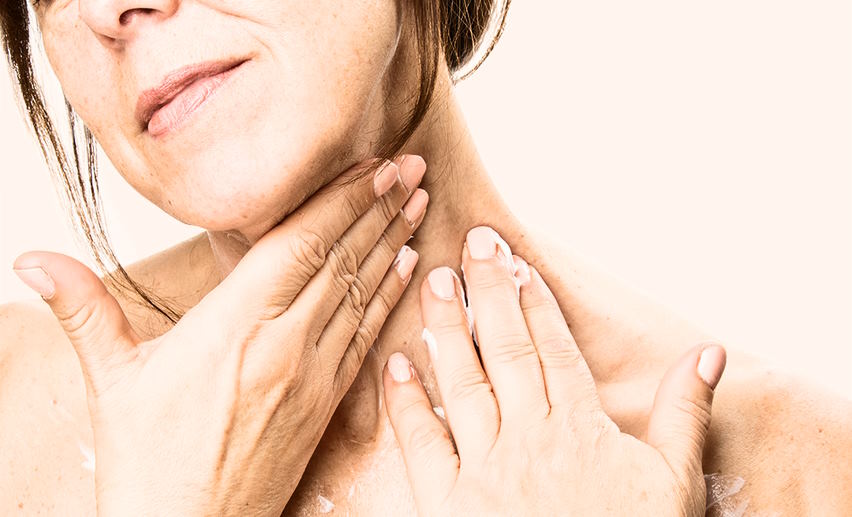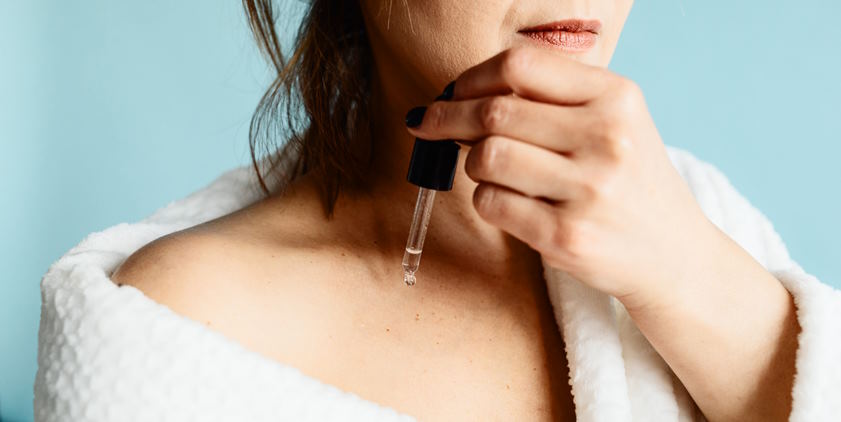
Taking care of your skin isn’t just about preventing wrinkles on the face and around the eyes – all parts of our body are prone to aging, including our chest area. Of course, you may want to keep things looking young and wrinkle-free for years to come! In this blog post, I will share with you some great tips on how you can do exactly that – from addressing signs of aging such as age spots, fine lines or wrinkles to maintaining optimal hydration levels in order to make sure that your chest remains youthful for as long as possible. So if you’re looking for ways to add a little extra glow into your life without resorting to drastic measures like plastic surgery, read on!
Investigating the cause of chest wrinkles
Factors that could lead to chest wrinkles include sun exposure, smoking, aging, genetics, stress, inadequate hydration and malnutrition.
Sun exposure is a major contributor to chest wrinkles. The sun’s ultraviolet (UV) radiation damages the skin’s collagen and elastin fibers, causing the skin to lose its elasticity over time. This can lead to sagging skin on the chest, creating wrinkles and other skin damage, such as age spots and freckles. Avoiding direct sunlight and wearing sunscreen regularly are important steps in preventing chest wrinkles from forming or worsening due to sun exposure.
Smoking causes premature skin aging due to the decrease of blood flow and the accumulation of toxins in the skin. The decrease in blood flow to the chest area can cause wrinkles to form prematurely, as well as other signs of aging, such as dryness and discoloration. Therefore, quitting smoking is essential to prevent chest wrinkles from worsening or forming due to this factor.

Aging is another factor that contributes to chest wrinkles. As we age, our skin produces less collagen and elastin, affecting its elasticity. This leads to sagging skin on the chest and can create wrinkles. Aging is a natural process that cannot be avoided but certain lifestyle changes may help to slow it down and reduce its effects on your skin.
Genetics may also play a role in developing chest wrinkles. People with a family history of wrinkles may be more likely to develop them due to genetic factors.
Stress can also lead to chest wrinkles. Stress causes an increase in cortisol levels, which can contribute to the formation of wrinkles. Reducing stress through relaxation techniques and lifestyle changes may help reduce the likelihood of developing chest wrinkles from this factor.
Inadequate hydration and malnutrition are also contributing factors to chest wrinkles. Not drinking enough water or not eating a balanced diet can lead to dehydration which can cause our skin to become dry and wrinkled. Therefore, eating a healthy, balanced diet that includes plenty of nutritious fruits and vegetables and staying hydrated by drinking plenty of water throughout the day, are important steps in preventing chest wrinkles from forming.
By understanding the causes of chest wrinkles, you can take steps to reduce and prevent them. Sun protection, quitting smoking, reducing stress and eating a healthy diet are all important steps in maintaining healthy skin on the chest area. Additionally, using moisturizing products that contain ingredients such as hyaluronic acid or vitamin C can help keep the skin hydrated and may reduce the appearance of existing wrinkles. With dedication and consistency, you can help prevent chest wrinkles from worsening or forming prematurely.

Chest wrinkle remedies that work
- Moisturize Daily: The key to eliminating chest wrinkles is to keep your skin hydrated and moisturized. Invest in a good quality, non-comedogenic moisturizer designed for the chest area. Apply it twice daily after cleansing your skin with a gentle cleanser.
- Exfoliate Regularly: To ensure that your skin remains well-hydrated, you should exfoliate it regularly. This will help remove dead skin cells and give your skin a fresh, healthy glow while reducing the appearance of wrinkles on your chest.
- Avoid Sun Exposure: UV exposure can lead to sun damage and premature aging of the skin on the chest area, so make sure you take the necessary precautions when you go out in the sun. Wear broad-spectrum sunscreen with SPF 30 or higher, and apply it liberally on your chest area before heading outdoors.
- Use Retinoids: Retinoids are topical products that contain vitamin A derivatives that can help reduce wrinkles on the chest area by stimulating collagen production and increasing cellular turnover rate. Speak to your dermatologist about these products for best results.
- Try Microdermabrasion: If you’re looking for a more intensive approach to treating chest wrinkles, microdermabrasion might be the ideal option for you. This procedure exfoliates the top layer of skin using tiny crystals that gently buff away dead skin cells, which can help reduce the appearance of chest wrinkles.
- Consider Laser Treatments: Laser treatments such as Fraxel and Intense Pulsed Light (IPL) are also effective in reducing the appearance of chest wrinkles by stimulating collagen production and improving skin texture. However, these treatments may be more expensive than other options, so talk to your doctor about the best option for you.
- Make Lifestyle Changes: Lastly, making simple lifestyle changes such as reducing sugar intake, quitting smoking, and exercising regularly can help keep your skin looking youthful and healthy and reduce the appearance of chest wrinkles over time.

